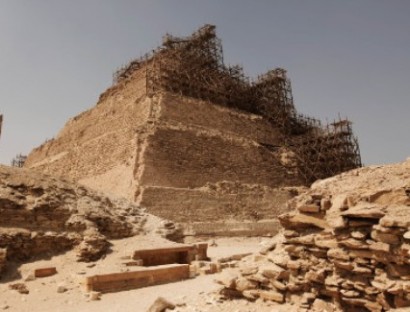Russian archaeologists have unearthed in Egypt, the wall of the ancient capital
 Russian archaeologists have unearthed in the area of Memphis white fragments the fence is the first ancient capital of United Egypt. About it TASS said the leader of the expedition, Director of the Center for Egypt studies Galina Belova. According to her, scientists conduct excavations on the territory of the Commercial Fog - one of the hills on which stood the ancient city. "On the opposite Bank of the Nile was the burial time of the first Egyptian pharaohs and the famous pyramid of Djoser. Logically, the first capital should be geographically close to the ancient necropolis". - said Belov. The Minister of antiquities and cultural heritage of Egypt Mamdouh al-Damati, in turn, said that the discovery was made in Giza province about 20 kilometers from Cairo. "This will help us to increase knowledge about this one of the cities of Ancient Egypt, who played a major political, religious and economic role in the history and one of the names which sounded like "Inbu Hedge" or "White walls"," quotes his words RIA Novosti. As notes Poinformuja Egypt, Russian scientists will continue to search for other fragments of the wall. During excavations experts also managed to find a water supply system, sewage, wells and watercourses. In addition, were discovered traces of art studios, workshops for the production of faience, glass. "Apparently, we are dealing with Imperial workshops, which were located near the Palace Apria, the last saite king of the XXVI dynasty," suggested Belova. Memphis is considered the oldest of the Egyptian capital, which more than 5,200 years ago was founded by king Mina. The first excavations on Whom the Mist, carried out with the permission of the antiquities Service of Egypt, were taken in 1901, reported on the website Center Egypt studies. Russian scientists have gained access in 2001, large-scale excavations began two years later. |




















